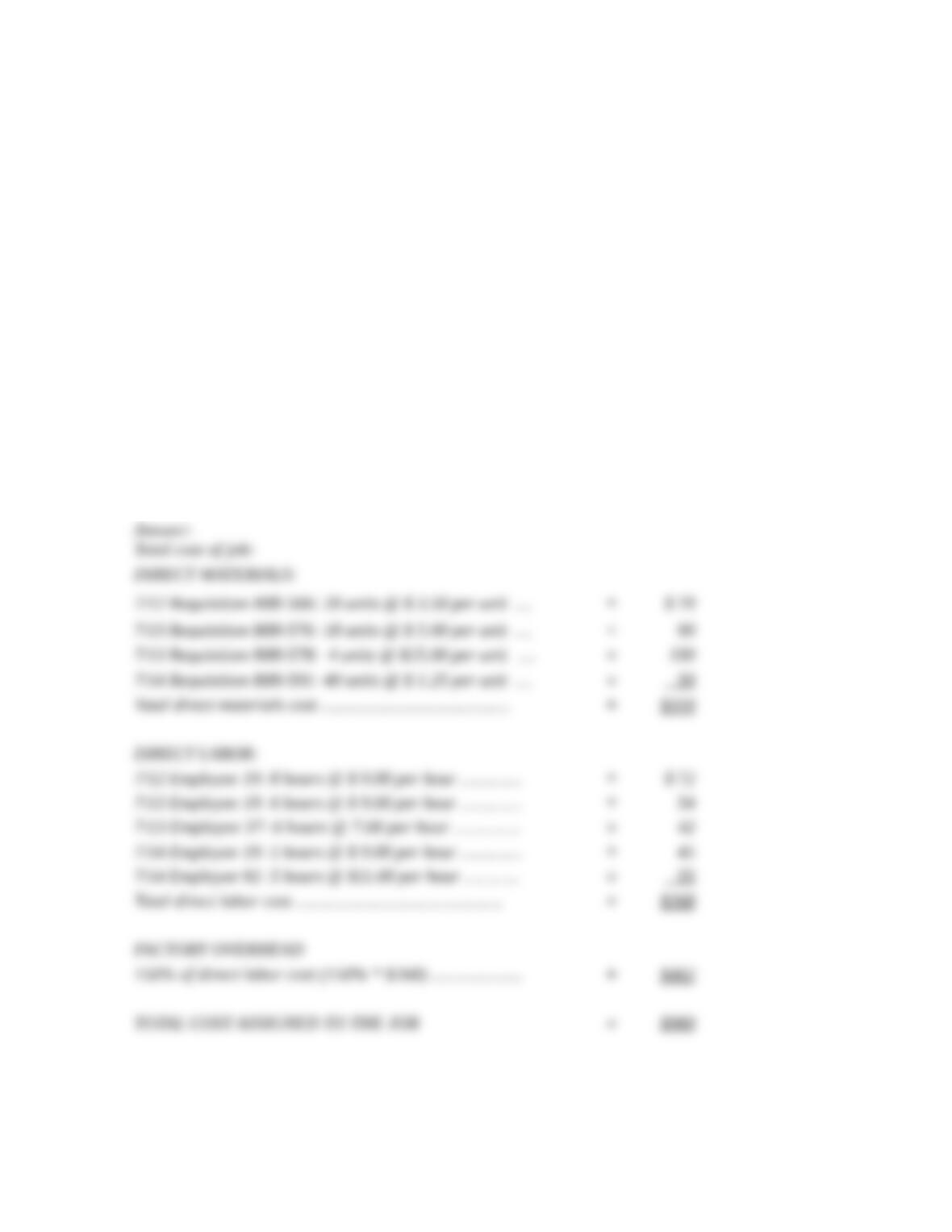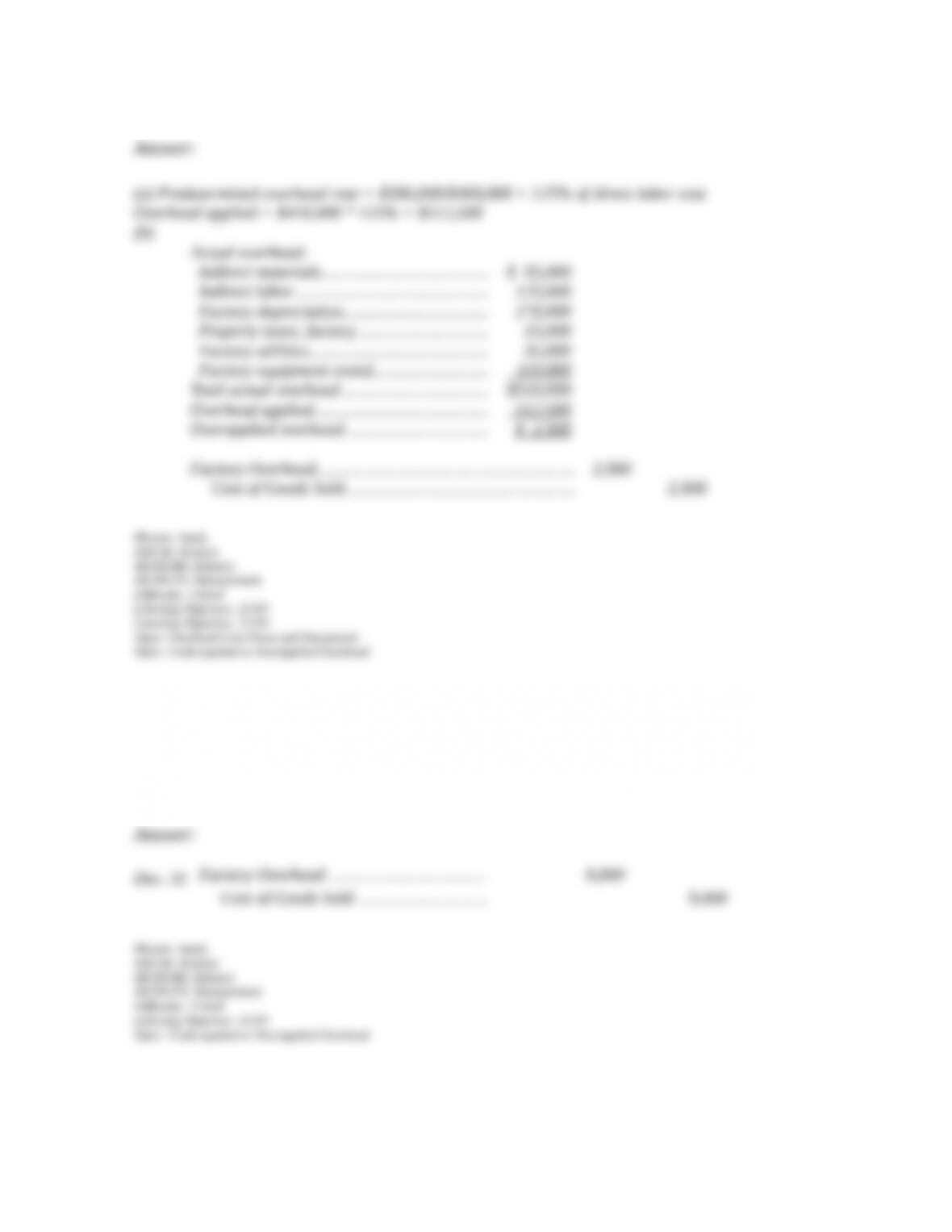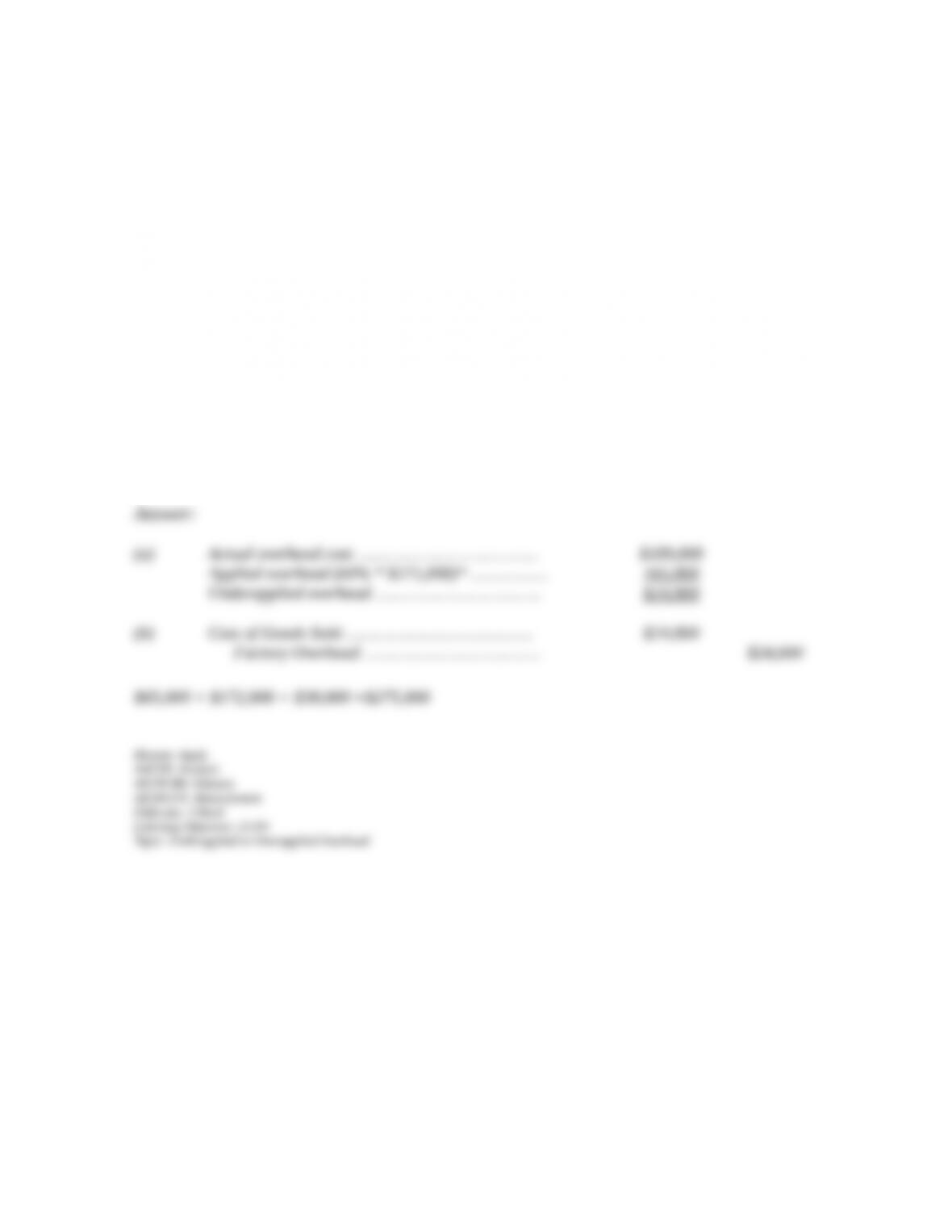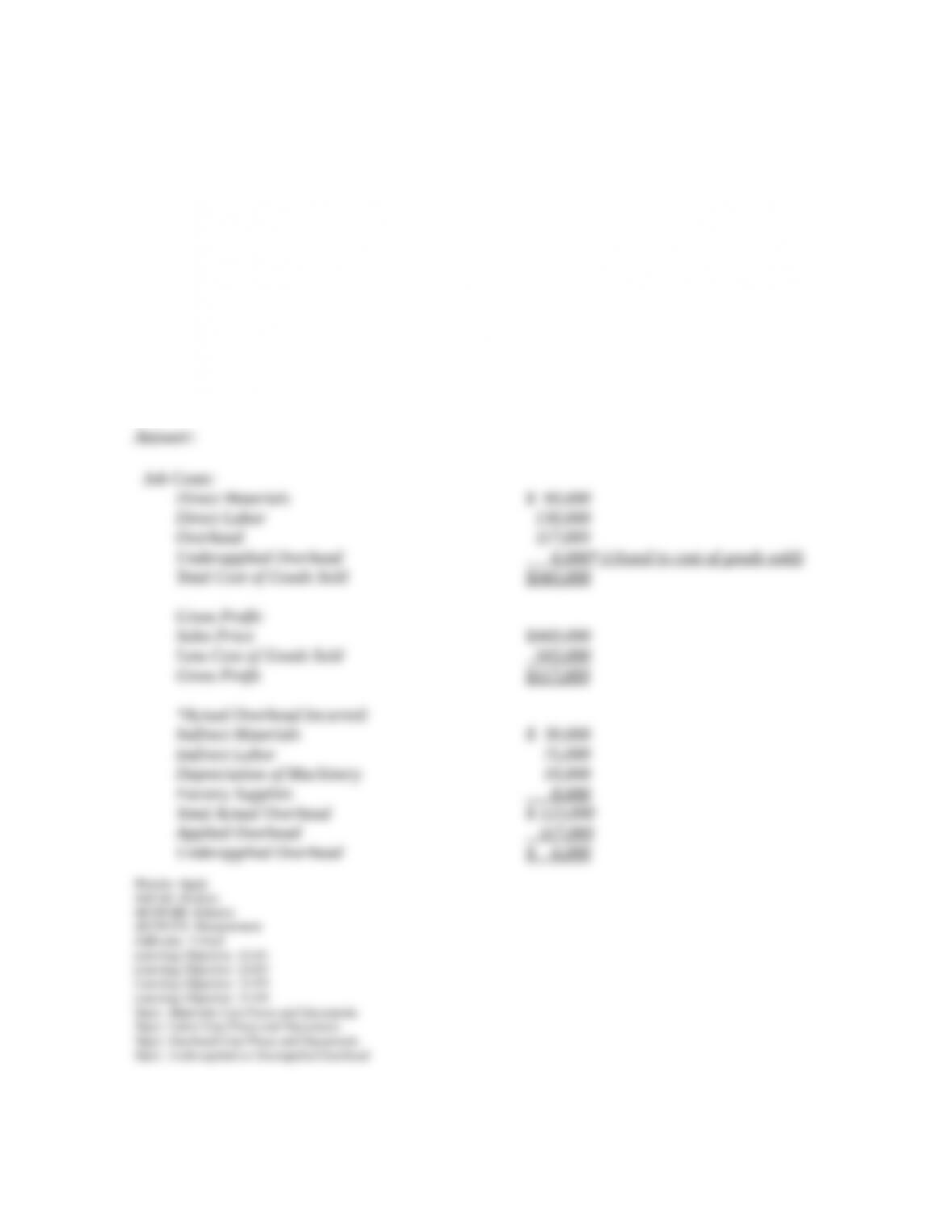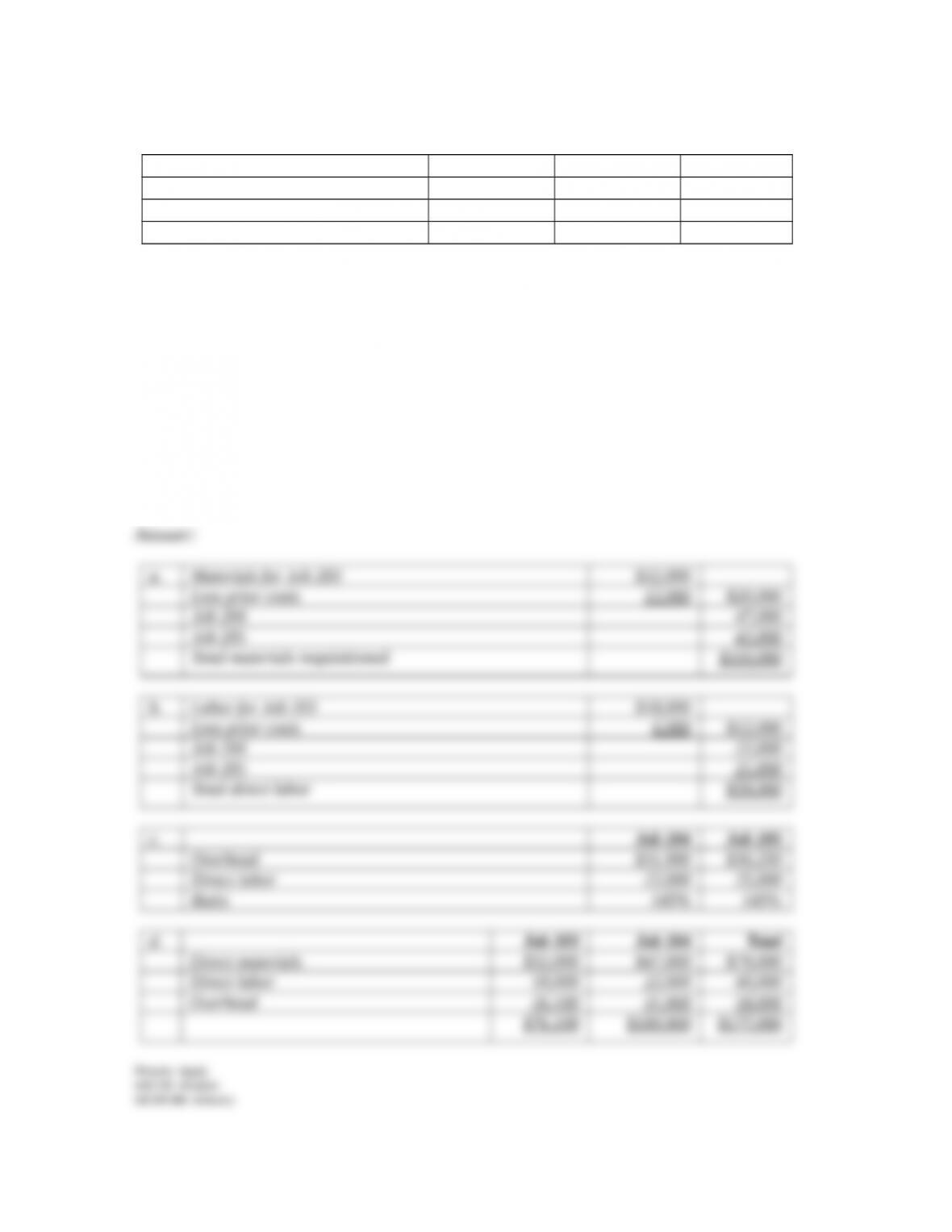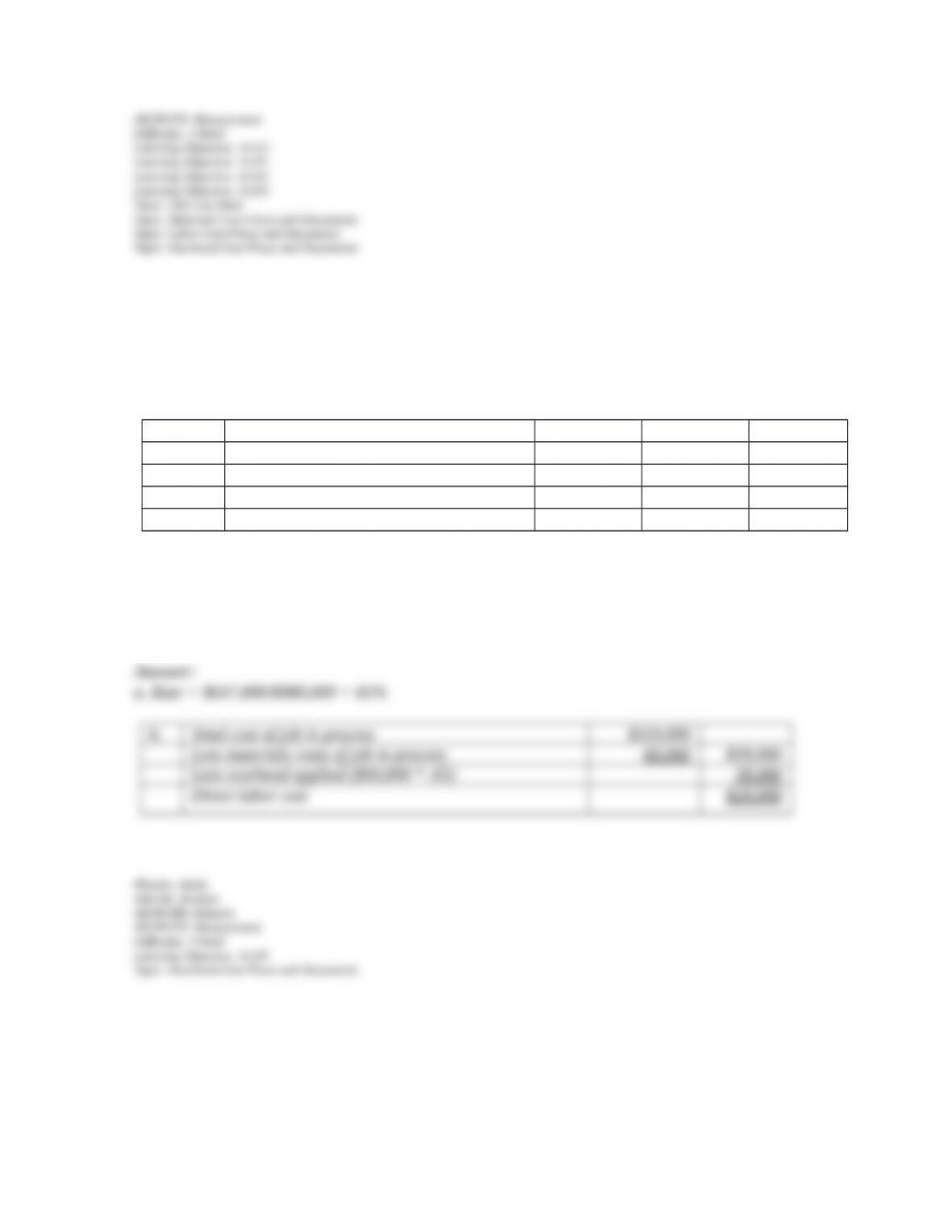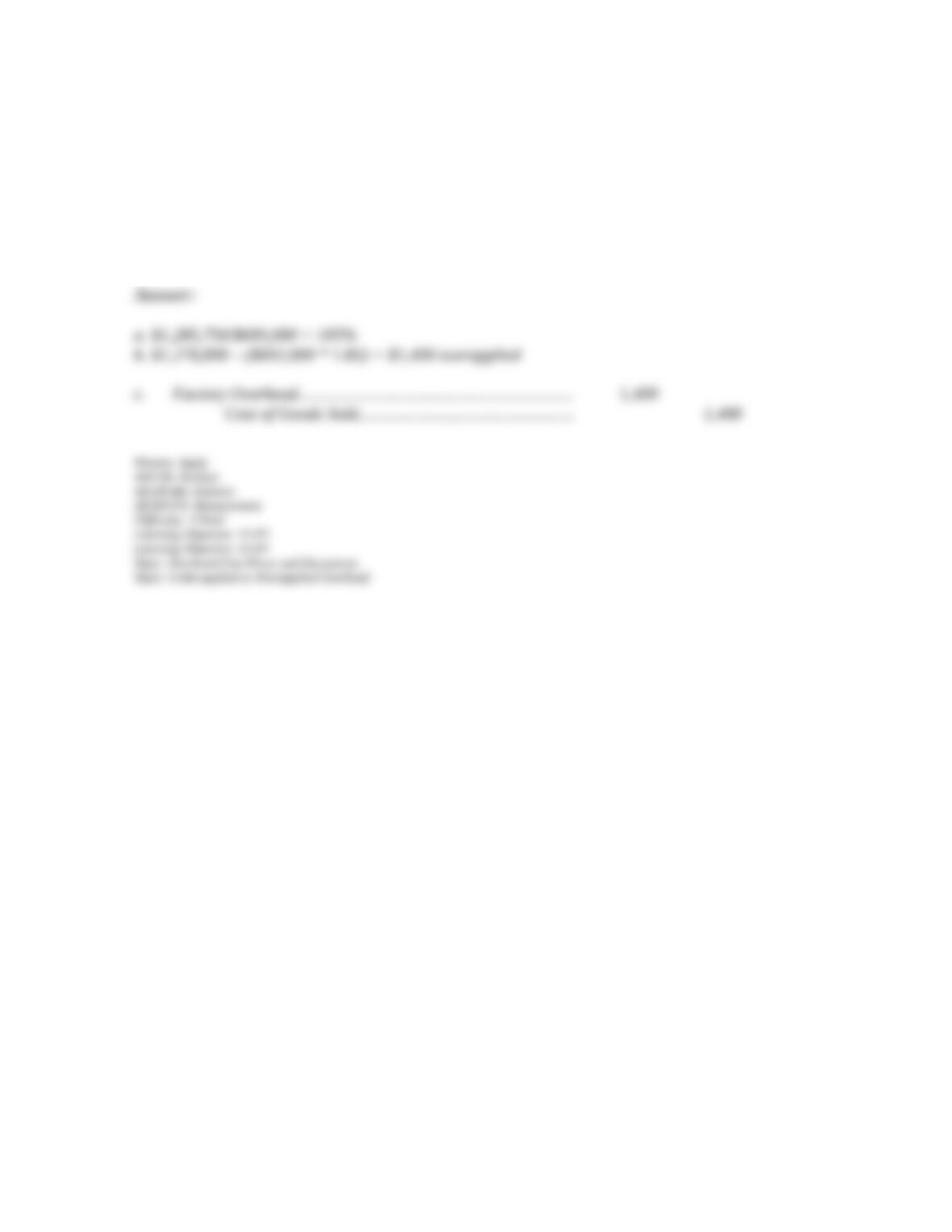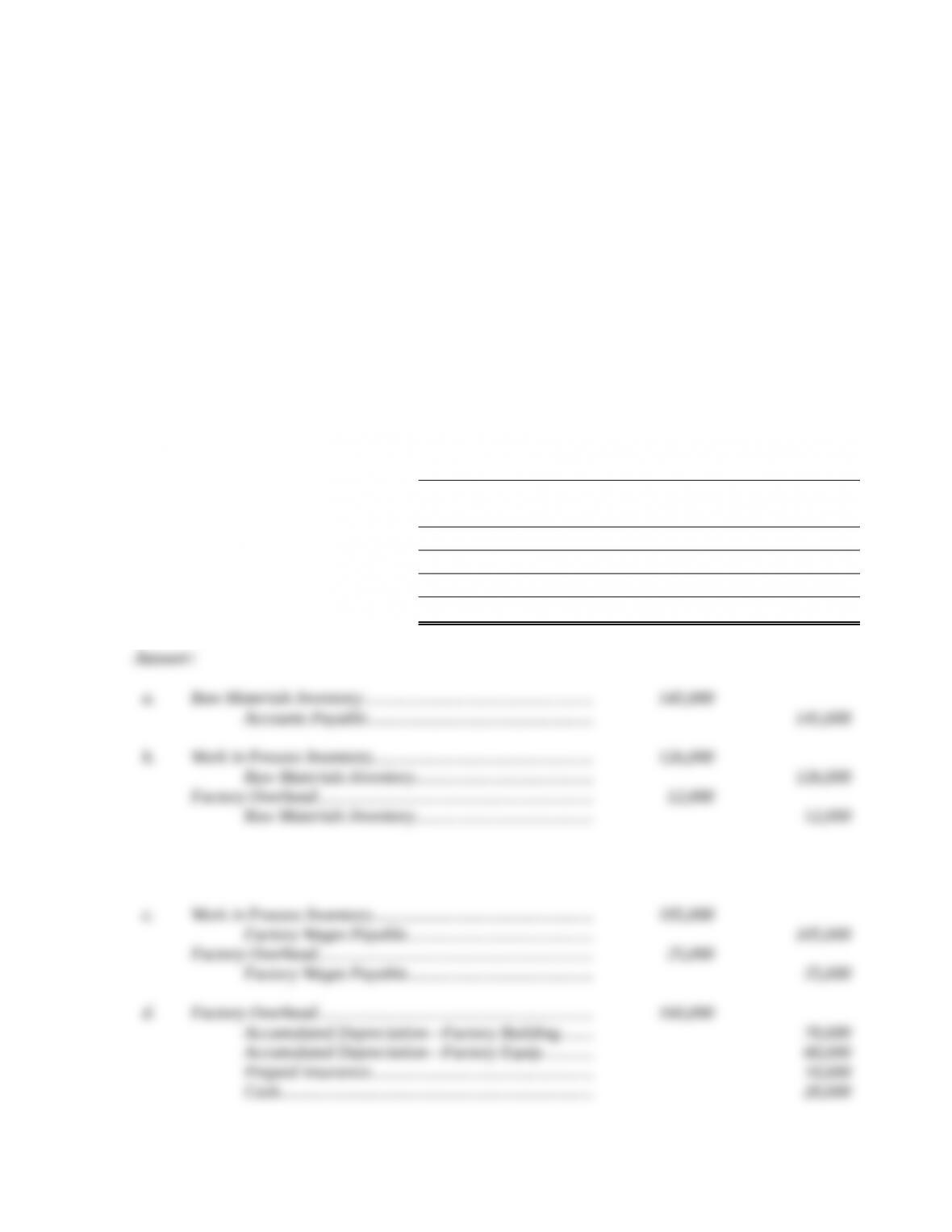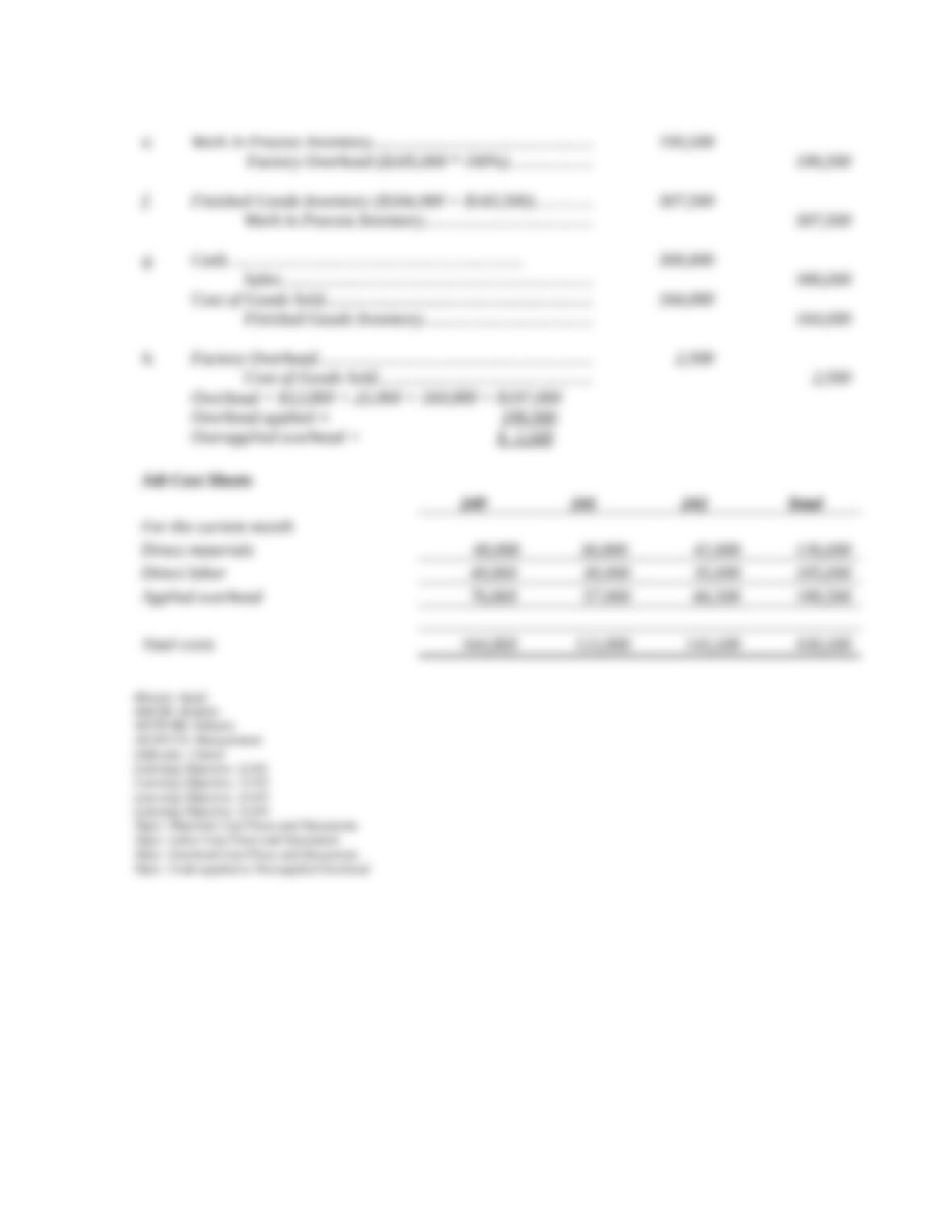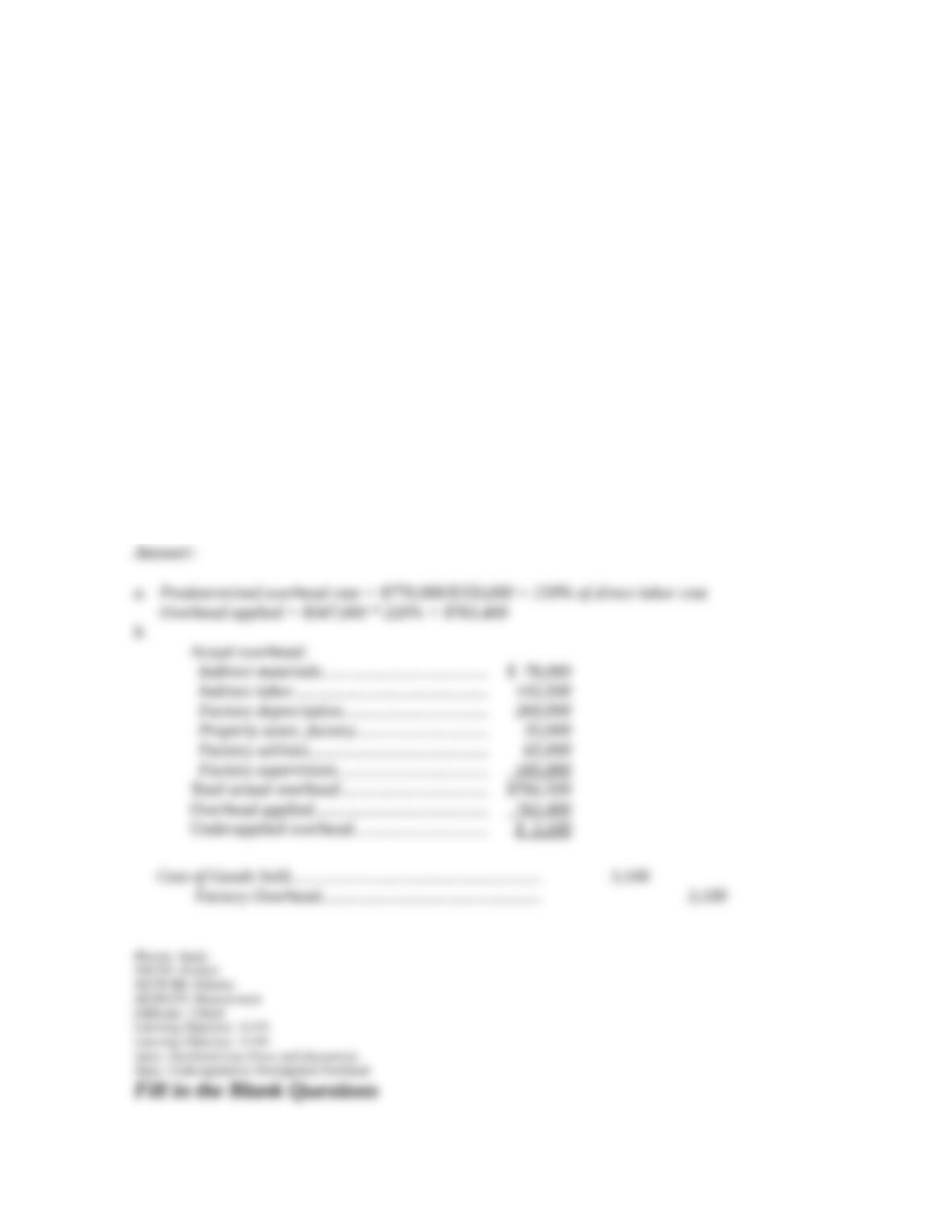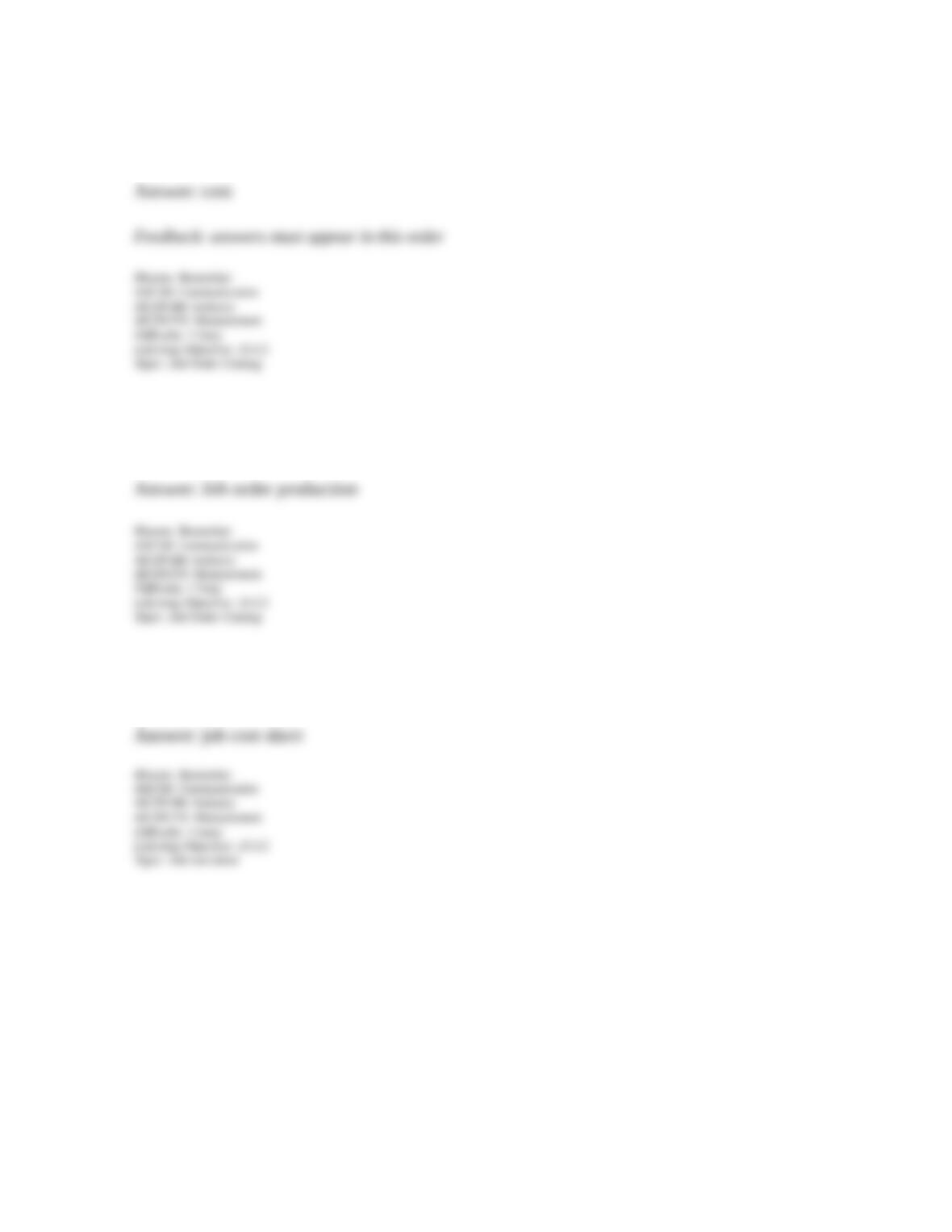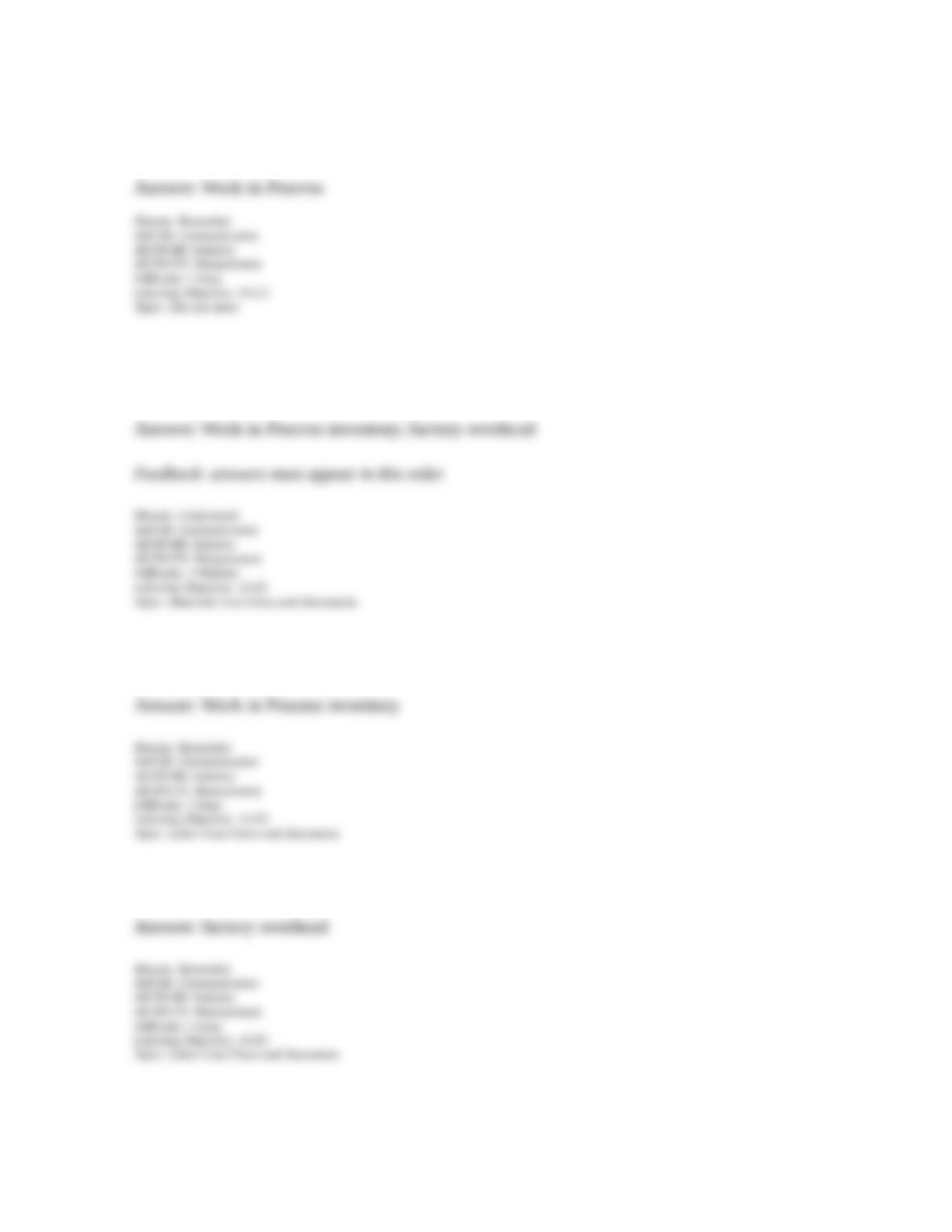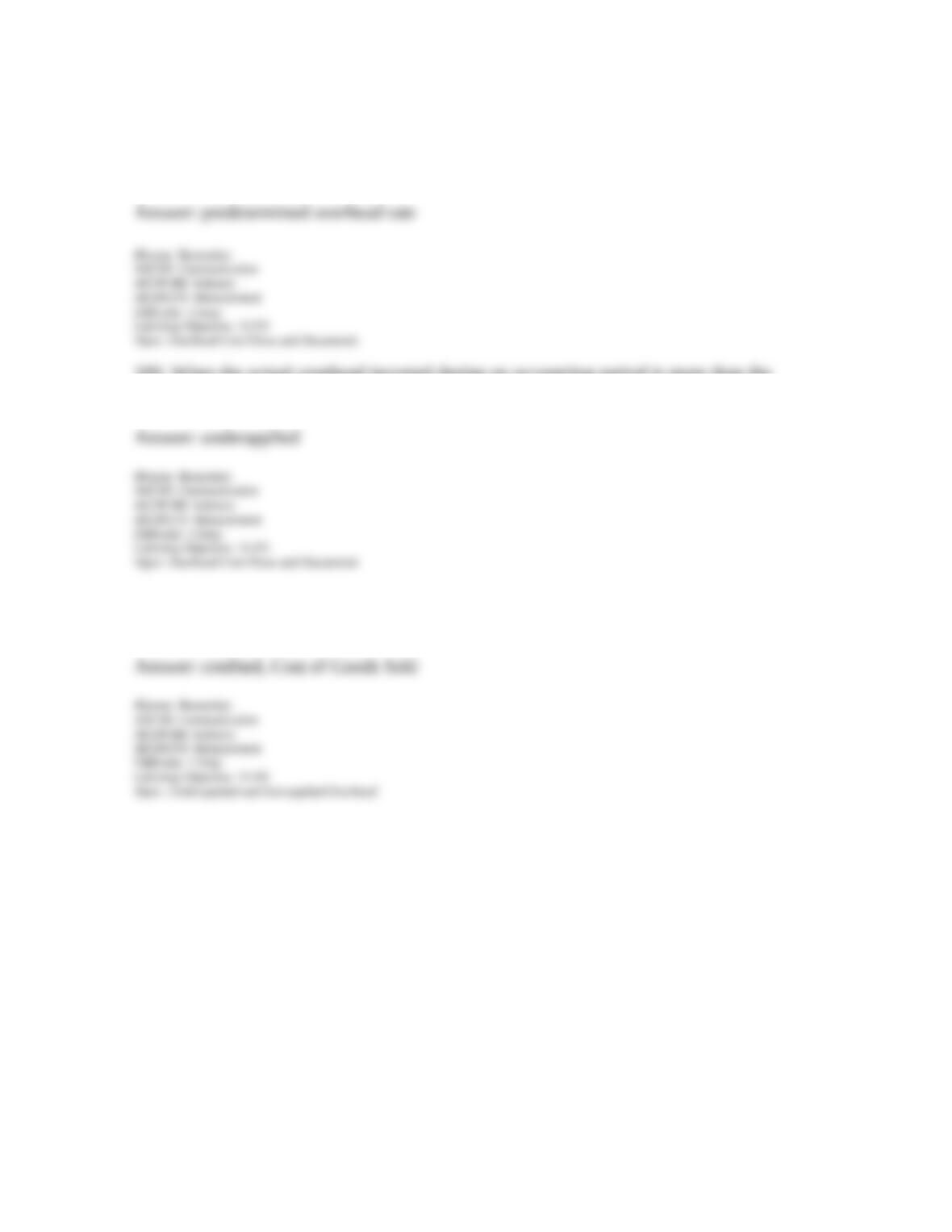128. Portside Watercraft uses a job order costing system. During one month Portside
purchased $153,000 of raw materials on credit; issued materials to production of $164,000 of
which $24,000 were indirect. Portside incurred a factory payroll of $95,000, paid in cash, of
which $25,000 was indirect labor. Portside uses a predetermined overhead rate of 170% of
direct labor cost. The journal entry to record the issuance of materials to production is:
A. Debit Raw Materials Inventory $153,000; credit Accounts Payable $153,000.
B. Debit Work in Process Inventory $140,000; debit Factory Overhead $24,000; credit Raw
Materials Inventory $164,000.
C. Debit Raw Materials Inventory $195,000; credit Work in Process Inventory $195,000.
D. Debit Work in Process Inventory $140,000; debit Raw Materials Inventory $24,000; credit
Materials Inventory $164,000.
E. Debit Finished Goods Inventory $140,000; credit Raw Materials Inventory $140,000.
129. Portside Watercraft uses a job order costing system. During one month Portside
purchased $153,000 of raw materials on credit; issued materials to production of $164,000 of
which $24,000 were indirect. Portside incurred a factory payroll of $95,000, paid in cash, of
which $25,000 was indirect labor. Portside uses a predetermined overhead rate of 170% of
direct labor cost. The journal entry to record the allocation of factory payroll to production is:
A. Debit Work in Process Inventory $95,000; credit Factory Payroll $95,000.
B. Debit Work in Process Inventory $95,000; credit Cash $95,000.
C. Debit Factory Payroll $95,000; credit Cash $95,000.
D. Debit Work in Process Inventory $70,000; debit Factory Overhead $25,000; credit Factory
Payroll $95,000.
E. Debit Work in Process Inventory $70,000; debit Factory Overhead $25,000; credit Cash
$95,000.

























































































